Leh Ladakh in January
Overview
Have you ever dreamt of a destination where the winter breezes tell you the stories of High Passes? Where do the Challenges become the adventure of a lifetime?
If there is a competition for paradise in the world, Leh Ladakh in January steps forward. Navigating through high-altitude peaks, under challenging weather conditions is the best choice for adventure trips.
January is not a month for people who find it difficult to endure the cold.
Electricity and other basic needs may be unavailable for days. As the temperatures drop below zero, even the water in the pipe freeze.
Now the question arises, is it a good time to plan a Ladakh tour in January? Yes, you can as long as you are confident about your health and adrenaline, but the answer depends on the individual decision.
This period falls within the offseason in Ladakh, attracting adventurers who travel here to test their bravery.
We have made this comprehensive guide to help you arrange a trip to Ladakh conveniently.
To know everything about the weather in Ladakh, activities to do, Destinations to visit, accommodations, bike rentals, etc., this guide is your source to plan the best January vacation to Ladakh.
Keep scrolling your adventure awaits in Ladakh’s winter wonderland.
Ladakh Weather in January
Ladakh weather in January isn’t ideal for everyone. To be able to operate with low temperatures, endure frigid nights, or become sick frequently, Nights are longer and days are shorter, you must possess both mental and physical toughness.
Temperature: In Leh and Nubra, the average Ladakh temperature in January is around 0°C, and as night falls, it can even dip as low as -10°C, making the weather extremely chilly.
It can be as low as -25°C in locations like Tso Moriri and Pangong. At high-altitude passes in Ladakh like Khardung La and Chang La, the daytime temperature stays below zero. You may enjoy this winter in Leh Ladakh in January as long as you cover yourself. It will also any existing health issues, like allergies, or cold-related illnesses, and make your journey to Ladakh uncomfortable.
Snowfall: You can experience a lot of snowfall in Leh Ladakh in January. Due to their high elevations, Chang La Pass and Khardung La Pass are guaranteed to have snow. In January, snow falls even in low-lying areas like Nubra Valley and Pangong Lake. But as the month progresses, the amount of snowfall increases in intensity. For those interested in similar snowy experiences, consider exploring Leh Ladakh in February.
Places to Visit iLeh Ladakh in January
Pangong Lake
Pangong Tso, another name for the high-altitude Pangong Lake, is renowned for its breathtaking blue water.
The lake is 134 km long and 5 km wide at its broadest point. The actual line of control between China and India crosses the lake.
About 60% of the Pangong Tso is covered by Chinese-occupied land. The lake’s water completely freezes over the winter.
The lake’s waters are covered in a thick coating of frost, making it walkable.
Pangong Lake was a renowned tourist destination in Ladakh for many years, but its popularity didn’t increase until the arrival of the Bollywood film 3 Idiots.
The filming of 3 Idiot’s Climax took place in Pangong. After the film’s premiere, there was an unanticipated increase in the number of visitors.
Nubra Valley
North of Leh town, Nubra Valley is separated from it by the 18,380-foot-high Khardungla Pass (sometimes called Khardongla). The drive from Leh to Nubra is very beautiful journey on road.
Sumur, Hunder, and Diskit are the Nubra Valley’s three main settlements. Diskit is around 130 kilometers away from Leh.
The Shyok and Nubra rivers are the two main rivers in the valley, that must be in your Leh Ladakh trip in January.
Nubra Valley experiences comparatively higher temperatures than Leh due to its lower altitude. For travelers with limited time, a short itinerary for Leh can guide you through the must-see places in Nubra Valley and beyond.
Travelers should not miss Nubra because of its flora, double-humped camels, Hunder dunes, and broad, level valleys.
The valley becomes a popular skiing destination in the winter, especially in January when all the rivers freeze and provide opportunities for ice skating.
Tso Moriri
Situated at a height of 4595 meters above sea level, Tso Moriri is among the world’s highest lakes.
It is located in the Changthang area of Ladakh, and getting to the lake requires traveling through the isolated, snow-covered Ladakh landscapes.
The deepest point in the lake is forty meters. A wide range of plants and animals can be found in the lake.
The village is home to the world’s tallest settlement, Korzok Monastery. Like Pangong, Tso Moriri requires authorization because it’s close to the border.
Changpa nomads dwell in the area around the lake; you can observe their customs about cattle.
Another fantastic location in Leh Ladakh in January photography is Tso Moriri in your Ladakh tour in January.
Leh Palace
The locals refer it Leh Palace as Lhachen Palkhar. This is a magnificent royal palace from the 17th century and one of the top places to visit in Ladakh in January.
The Ladakhi ruler Sengge Namgyal constructed this regal residence.
The Archeological Survey of India maintains the palace. It is split into two parts: the current prince’s residential quarters are in one, and the remaining portion is a museum.
This nine-story castle is still breathtaking on the inside and out. In front of it, there’s a prayer space, a museum, and a stunning panorama.
Gazing at the Zanskar Valley from the rooftop will provide you with a breathtaking perspective.
Shanti Stupa
Situated in Changspa (the upper section of Leh), the Shanti Stupa (Peace Temple) is one of the most well-liked new tourist attractions in Leh.
The stupa was built in 1991 by Ladakhi and Japanese Buddhists. Buddha relics that have been revered by the 14th Dalai Lama are located at the foot of Shanti Stupa. Constructed on top of a hill, the stupa is revered by Buddhists.
A road leading to the stupa was built in 1983, two years after construction on the structure started.
Trekking aficionados can reach it on a winter vacation by climbing the steep stairs.
There is good road connectivity aside from that.
The high altitude of Shanti Stupa near Leh City provides an amazing perspective over the city and its stunning mountains covered with snow all over.
Famous Monasteries in Ladakh to Visit in January
Hemis Monastery
The Hemis monastery (gompa) of the Drukpa tradition of Buddhism is located in the Ladakh settlement of Hemis, some 45 kilometers from Leh.
The monastery was rebuilt in 1672 by Sengge Namgyal, the Ladakh emperor, although it was first built before the eleventh century.
Hemis receives a significant influx of tourists each year.
Honored for his role as the Buddha’s resurrection in a dance show at Hemis Monastery, Lord Padmasambhava is the subject of the Hemis Festival.
Both Indian and foreign visitors to Ladakh stop at the Hemis Monastery.
Some plan to visit Thiksey Monastery and Hemis Gompa when visiting Ladakh in January for a traditional touch.
Thiskey Monastery
Thiksey Monastery, also called Thikse or Thiksey Monastery, is a Tibetan Buddhist monastery affiliated with the Gelug school and is situated on a hill in the Thiksey village.
The town of Ladakh in Leh is situated about 20 kilometers east of Thiksey along the Leh-Manali National Highway.
The monastery houses Buddhist artwork, including statues, thangka paintings, swords, and stupas. The monastery is home to a 50-foot-tall figure of Maitreya.
Due to its striking design atop a hill and its snow-covered hill faces, this gompa is a well-liked winter travel destination in Ladakh.
Sacred dances, such as the mask dance and the Cham dance, are performed during the yearly ritual.
The trade fair is a gathering place for Ladakh residents to exchange items.
Diksit Monastery
Diksit monastery is home to one of Ladakh’s best monasteries, which is a major tourist destination. Nubra Valley’s administrative hub, Diskit, is well-known for the historic monasteries it is home to.
The Dosmoche festival and Maitreya Buddha are the monastery’s main draws. The monk Changzeb Tserab Zangpo founded the monastery in the fourteenth century.
The monastery’s extensive collection of murals and fresco display are additional reasons to visit.
Come to the monastery and craft your itinerary if you want to attend the Dosmoche festival, which takes place there from December to early January.
Likir Monastery
This Buddhist monastery is located in Ladakh, one of the most popular travel destinations in northern India. 52 kilometers separate this location from Leh on the west.
“The Naga-Ecircled” is how the word “Likir” is translated in literature. It is a representation of the great serpent spirits, Takasko, Naga-rajas, and Nanda.
There are two Dukhangs, or meeting halls, at the Likir monastery. Together with an additional six rows of seats designated for junior lamas, the head lama of Likir is seated on a throne located in the older assembly hall.
The gods Amitabha, Sakyamuni, Bodhisattva, Tsongkhapa, and Maitreya are housed in the meeting halls. The grounds of the temple provide breathtaking scenery for amazing photos.
If not, you should go to the Likir Museum at the summit. There is a Rs. 20 fee to enter.
Chemrey Monastery
Chemrey Monastery, located in Jammu and Kashmir’s Ladakh area and 40 kilometers from Leh, is devoted to the Drugpa order of Tibetan Buddhism.
The monastery is a significant hub for Buddhist education and draws a lot of visitors due to its lovely setting.
Lama Tagsang Raschen established the monastery in 1664 AD; he was also the founder of Hemis monastery.
King Sengge Namgyal, who played a significant role in the introduction of Tibetan Buddhism to Ladakh, is also honored at the monastery.
The one-story-tall idol of Padmasambhava is the monastery’s main draw. In the monastery live about twenty monks.
The monastery complex consists of the Lhakhang (Lama temple), the Dukhang (assembly hall), and several shrines.
Things to do on Ladakh Tour in January
Explore Leh Town
For many travelers, Leh is the ideal vacation; for adventure seekers, it’s the ultimate destination.
There is nothing like this scenery in India or the world, and a great deal of it remains unexplored and unrecorded.
There’s not much to offer in the way of nature or wildlife photography, but you can photograph a large blank canvas that you can fill with color instead.
Along with the captivating scenery, there are numerous turquoise blue lakes, exquisitely built monasteries, snow-covered mountains, and unbelievable views that shift dramatically every few kilometers.
You can come here on your own, with friends, family, or even that special someone. It’s affordable and safe.
Visit Open Monasteries
Your trip’s cultural experience is enhanced when you explore Ladakh’s monasteries which are the best places to visit in Leh Ladakh in January.
There are a lot of monasteries in Ladakh. After seeing Shey Monastery, proceed to Thiksey Monastery, Diskit Monastery, Hemis Monastery, and Lamayuru Monastery, each of which offers a distinct experience in your Ladakh tour in January.
You may learn everything there is to know about Buddhist customs and the architecture of the Ladakh region from any monastery.
Attend prayers amid the spiritual atmosphere, if at all feasible.
Nearly every monastery hosts cultural events and religious celebrations. Talk to monks to find out more about the customs followed there.
Go On Chadar Trek
A frozen Zanskar River, which flows through Jammu and Kashmir and is a tributary of the Indus, gave rise to the trek’s name.
The walk route descends the secluded Zanskar gorge, whose walls jut out of the riverbed several thousand feet. Locals use the river path to get from Leh to Zanskar in the winter months.
You will sleep in caves, which are essentially gorge-face depressions that have provided shelter to inhabitants for millennia.
The interesting thing about the Bau caves is that their names are derived from the mythology associated with them.
There are no notable ascents or descents on the route. You will most likely walk for five hours every day.
As Ladakh Weather in April becomes more pleasant, several trekking routes and activities that are challenging during the cold winter months become more accessible. If you’re planning on trekking or camping, April offers better conditions for outdoor adventures.
Attend Local Festivals
Despite its deep and subtle religious philosophy, Buddhism’s followers in Ladakh nevertheless have a great sense of joie de vivre, and even serious religious ceremonies are cause for joyful celebration. Hemis festival is one of the major festival which is celebrated every year in Hemis Monastery.
Winter is a very quiet season for most people, and it coincides with many of the monastic festivities. They appear in the Gonpa courtyards as dance dramas.
Lamas do mimes that depict many aspects of the faith, such as the advancement of the individual soul and its cleansing or the victory of good over evil.
They are dressed in vibrant clothing and frequently don strikingly frightening masks.
Engage in Photography
Magnificent views, wide valleys, and tranquil lakes may all be found in Ladakh. Making it an excellent place to achieve your travel photography objectives.
See festivals, parks, and monasteries to appreciate the area’s winter splendor.
Seize the opportunity to photograph Pangong Lake and Nubra Valley’s hues during the golden hour.
Ladakh is home to diverse bird species and rare fauna, such as Himalayan blue sheep, which you may be fortunate enough to see.
Ladakh’s beautiful heavens give you fantastic astrophotography opportunities throughout your camping trip.
To capture the warmth and simplicity of village life, stroll around isolated settlements.
Experience Star Gazing
Ladakh is a heaven for astronomy enthusiasts, offering beautiful sky and high-altitude deserts for stellar gazing. since there is a clear sky.
Choose elevated sites that are remote from the city center, there are many remote places to visit in Ladakh in January for star gazing.
Tso Moriri Lake and Pangong Lake are well-liked destinations for overnight stays to enjoy stargazing.
Carry high-quality binoculars; you may rent them from nearby stores along with other essentials like lenses and tripods.
January nights in Ladakh are cool, so dress warmly to protect yourself from frigid winds. Observe the Milky Way.
Because Ladakh has little light pollution, you might be able to see constellations and the Milky Way.
Enjoy Winter Camping
Camping is a crucial component of enjoying Ladakh when visiting as part of an itinerary.
Nubra Valley and Pangong Tso usually have a notable camping season. There are lots of campgrounds nearby for an enthralling encounter.
Before setting up camp, spend a few days in Leh to acclimate to the high-altitude climate. Bring the necessities for your camping trip.
Winter camping is available on treks like the Chadar Trek, where participants can take in the Himalayan peaks covered in snow.
You can camp close to monasteries and experience the customs of the area.
Taste Local Cuisines
Savoring the taste of distinct flavors can be achieved by indulging in the local cuisine of Ladakh.
Taste Thukpa, a noodle soup with beef and veggies, after your hectic and exciting schedule.
Eat momos, sample the Ladakhi tree, and enjoy churpi, a yak milk dish, in addition to this Relish Skyu.
Investigate neighborhood bakeries that sell a variety of Ladakhi and foreign-baked foods. Due to the severe weather in Ladakh, native cuisine and herbs are used.
Feel free to sample every one of these delicacies and learn about their herbal expertise.
See locals at Ladakh’s festivals and customary gatherings to get advice on Ladakh specialties.
Tips to Visit Ladakh in January Month
Check Weather Conditions: Ladakh experiences heavy snowfall and the temperatures are below freezing point throughout the month. Stay updated with the weather forecasts to prepare yourself for the cold and plan your outing timings.
Packing Essentials: Make sure you pack all necessary items for your journey, including thermal wear, gloves, boots, and accessories that will keep you warm during your trip to Leh Ladakh in January. A Leh Ladakh packing checklist will be your guide to make sure you have everything you need to stay comfortable in the cold weather.
Road Conditions: Many roadways, and high-altitude passes, might be covered under layers of snow. Sometimes any be closed due to harsh conditions. Check the status of routes like Manali-Leh Highway and Srinagar-Leh Highway before your itinerary. Consider renting cabs and experienced drivers to go through harsh road conditions.
Altitude Acclimatization: Make sure you spend a few days in Leh City to get adapted to high altitudes and thin air conditions with low oxygen. This may help you minimize the risk of altitude health issues. Before trekking a day in Leh is a good consideration.
Health Precautions: The cold in January is intense, all the areas will be converted with extra challenges. Dress in layers, stay hydrated, and be harsh to face the breezes. If you find any symptoms of altitude sickness meet a health care professional before your itinerary. Before trekking or any winter activities make sure you are physically fit.
Permit Requirements: Certain areas in the Ladakhi region, especially areas near the border like Pangong Tso, need permits from the government. Obtain all the necessary permissions from the offices, and make sure you make it on time because some offices may be closed or limited operational hours in winter.
Power and Connectivity: Electricity and networks can be scarce in Ladakh during January. Be prepared for limited power resources and sudden power losses. Carry a power bank to use in an emergency. Charge your electronic device whenever possible. Inform your near and dear about all your communication disruptions for an emergency.
Photography Gear: Ladakh’s winter landscape is heaven for photography enthusiasts. Ensure you have all the camera gear and pack extra batteries as cold temperatures quickly drain out the charge. Ensure that all the devices are cold-resistant, as the cold here even harms devices. Don’t forget to capture the mesmerizing lake during the golden hours in Ladakh.
If you’re considering visiting in March, you’ll find the conditions slightly milder compared to January, with less severe cold. For more details on what to expect and how to prepare, check out our Leh Ladakh in March guide.
Essential Information
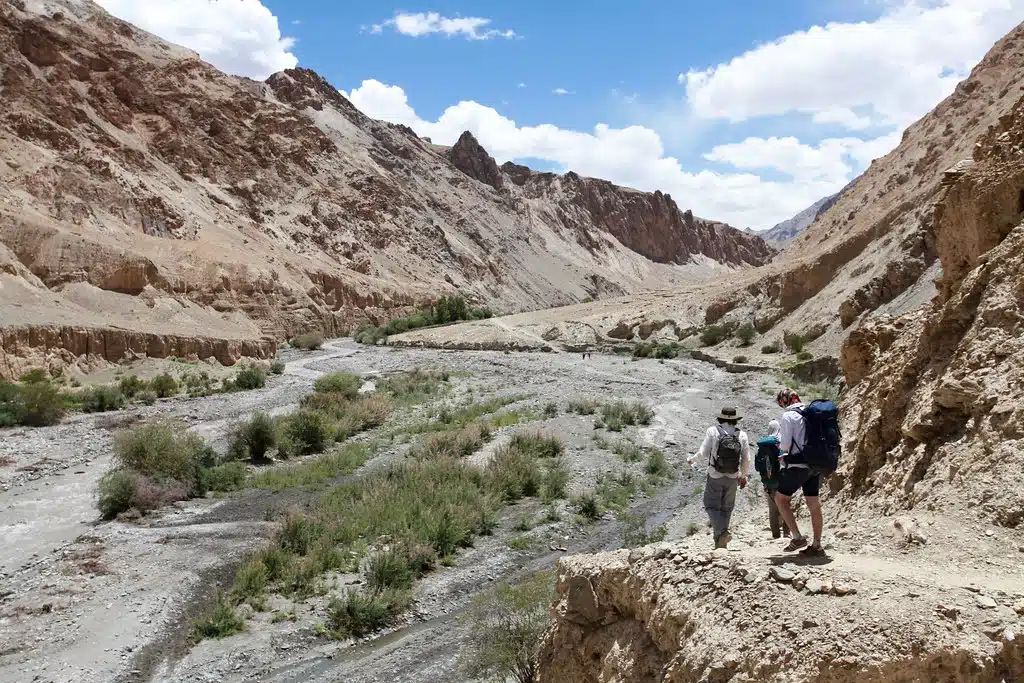
How To Reach Ladakh In January
By Air: In January, the only way to go to Ladakh is by plane. Flights to Leh are available from major Indian cities in January, so you may plan a trip and arrive at your ideal location. Don’t forget to reserve the flight several months ahead of time to save some additional cash. Additionally, bear in mind that during the winter, there is a higher likelihood of flight cancellations to Ladakh.
By Train: Traveling to Leh Ladakh by train is also an affordable option. But in winter The closest train station is 700 miles away from Ladakh in Jammu Tawi, later from the station it is difficult to reach Ladakh as half the way is completely covered by thick snow.
By Road: The only way to see this stunning location is by taxi. January is not the ideal month to go on a bike ride to Ladakh if that is what you were considering. The best approach to see Ladakh is to hire a taxi since the driver would be a skilled one who is familiar with the routes. There are feet of snow on the Leh-Manali and Leh-Srinagar highways, making it impossible for any kind of vehicle to travel through.
Leh Ladakh in December: While December presents similar challenges with heavy snowfall and cold temperatures, it offers a unique opportunity to experience the tranquil beauty of Ladakh in winter. Travelers can enjoy the serene landscapes and fewer crowds, making it a perfect time for those seeking solitude.

Transportation Options In Ladakh
Public Transportation: During the January Ladakh tour, there is little public transit available. Verify bus routes and schedules ahead of time. In rural places that receive a lot of snowfall, many government services are suspended. However, you may travel to and from major places like Nubra Valley, Pangong, and Leh City.
Rental Options: Renting a bike can provide you with more flexibility when exploring the picturesque villages of Ladakh. Make sure the car is appropriate for sluggish-moving terrain. We offer the greatest vehicle and bike rentals for you to choose from. You can use any of our cars for your winter getaway.
You can reduce your worry about traveling by participating in guided excursions that include transportation. To improve your experience, be adaptable and versatile when it comes to different modes of transportation.

Wildlife Encounters in January
In January, Ladakh offers unique wildlife encounters. January is the mating season for snow leopards. Head to Hemis National Park to spot them.
Tibetan Gazelles are present in these winter landscapes. Though you find many animals under hibernation, Himalayan Marmots, and Blue shepherds are more visible in January. Ladakh’s frozen lakes, including Pangong Lake and Tso Moriri, attract migratory birds. Black-necked cranes, waterfowl, and bar-headed geese are found.
Changes in Ladakh weather are a source to witness wildlife for photographers. Explore the animals grazing in the winter vegetation of the region. Hiring local guides can increase the spotting of different flora and fauna.

Accommodation Options in Ladakh
A frequently asked question is “Where can I stay in Ladakh?” Ladakh is all about nature at its most beautiful, with breathtaking scenery, expansive vistas, and an abundance of amazing places to visit. Leh, the capital and the place where practically all tourists stop to rest offers some of the greatest amenities for a family vacation in Ladakh. Among the excellent choices are:
Hotels and Guesthouses: Hotels and guest houses in Ladakh during January meet the needs of visitors seeking a comfortable stay. They are equipped with heaters, best interiors, and hot meals. They are majorly found in Leh and Nubra Velly, making them suitable for central locations.
Homestays: Homestays offer the local cultural experience, allowing people to stay with locals. You can enjoy local hospitality and cuisines. The warmth of the family ecosystem provides a personal touch. People who want to immerse themselves in local culture can opt for homestays.
Luxury Camps: Luxury camps in Ladakh highlight the winter experience amid nature. These camps provide highly premium amenities, comfortable beds, heating facilities, and luxurious stays. Luxurious Camps near Pangong Lake and Nubra Valley are the major sources.
Monastery Stays
Monasteries provide a unique option to enter into the spiritual heart of Ladakh. Guests can witness the daily rituals of Buddhism. You will get a peaceful ambiance in monasteries. Monasteries around Leh Palace and Nubra Valley are open for tourists in January.

Things To Carry For Ladakh trip
- Wear layers of clothing because the weather might change quickly during the day.
- A few basic medications for fever, headache, upset stomach, cold, and body aches should be packed. Add a pain reliever spray and a couple of Band-Aids as well.
- Carry the required documents and permits to explore the remote destinations.
- Wear loose clothing. Don’t wear clothing that is overly tight or unpleasant either.
- Always have a jacket or woolens close at hand. Because of how frequently the weather in Ladakh changes.
- The sun is very strong, so protect yourself from sunburn by wearing a cap and sunscreen.
- You will need to pack a lot of heavy woolen and thermals.
- If you ride a motorcycle, bring extra warm woolen socks so you have something to change into in case the water crossings get wet.
- Make sure you have a balaclava and muffler on hand.
- Bring a decent cold cream and lip balm because it’s going to be rather cold.

Safety Considerations to Visit Ladakh in January
- High altitude and extremely low temperatures can induce AMS, common cold, and cough. Therefore, it’s a good idea to be ready by taking the appropriate precautions, such as wearing many layers of warm clothes, taking the recommended medications, and drinking enough water.
- People who are planning treks always take care of steep routes and terrains before they travel in January.
- If you are having headaches and dizziness, which is typical because of the high altitude, you can get oxygen at oxygen bars.
- Because of this place’s thin atmosphere, the sun can be very harsh, therefore use sunscreen and take precautions to protect yourself from direct sunlight.
- Even at the beginning of the month, you should bring thick clothing because the nights can get very chilly.
FAQ's
Leh Ladakh is the perfect destination for travelers who want the serenity and quiet of a region combined with the chilly temperature. It may even drop to a point where there is frequent, heavy snowfall. But the summer months, when it’s warmer and the roads are less congested, are when the majority of visitors come here.
January trips to Ladakh are frequently regarded as forbidden. None of the highways indeed lead there, but once you get to Leh, all internal routes are open. Every day, soldiers shovel the snow off the road. However, there are still some things you wouldn’t be able to do, such as taking a road trip; you’d need to be ready for harsh winter weather; you can’t just go without planning; you’ll need to iterate carefully; and there’s always a degree of uncertainty while traveling.
1. Pangong Tso Lake: The Bollywood film “3 Idiots” made this sapphire blue lake famous. Enjoy a captivating camping experience next to the charming lake beneath the starry skies.
2. Nubra Valley: Located amid the snow-capped high terrain, Nubra Valley is a beautiful desert that you will encounter on the route to Pangong Tso.
3. Zanskar Valley: This well-known yet remote Ladakh location is a unique spot where you can see towering mountains, narrow gorges, and breathtaking sweeping views of the Zanskar River running straight through the center. It is somewhat well-known among trekkers and is only open for a certain amount of time each year.
The average temperature in Leh and Nubra is about 0°C, and as evening approaches, it can even drop as low as -10°C, making for very cold weather.
In places like Tso Moriri and Pangong, the temperature can drop as low as -25°C. Days at high-altitude passes like Chang La and Khardung La remain below freezing. January is a great time to visit this winter paradise as long as you protect yourself. It will also exacerbate any current health problems, such as allergies or disorders linked to the cold, and make your trip to Ladakh difficult.
From November to February, Ladakh has severe winter weather with
lots of snowfall. There are times when the temperature drops below -30 degrees Celsius and certain passes can get up to 50 feet of snowfall. The greatest time to enjoy a true winter is during these months, but safety precautions and being ready for the severe weather must be taken.
Yes, 4 days is enough to visit Ladakh. You can traverse all the places
around the region like Pangong Lake, Nubra Valley, Leh Palace, and other popular monasteries. Plan your trip with our short Leh Ladakh tour packages to cover the trip in under 4 days. Book the packages and enjoy a hassle-free destination.
Ladakh can only be reached by plane in January. Major Indian cities provide flights to Leh in January, so you can arrange a trip and get to your desired destination. Remember to book the flight far in advance if you want to save even more money. Remember that there is also a greater chance of flight cancellations to Ladakh during the winter.
Indeed, traveling in January is safe. That being said, bear in mind that high-altitude passes get significant snowfall. The snow obstruction on the paths leading back to Leh may trap you when you visit a certain location. This time of year also presents a significant risk for avalanches, so exercise extreme caution.
If you enjoy the snow, January is the best month to see the everlasting splendour of the Himalayas, which cover the majority of Leh. If you want some peace, January is the best time to visit Leh because it’s also a month when the city is relatively free of crowds of tourists. Finally, You must not miss out on all the adventures the location has to offer in January, such as snow-covered roads snow-gliding, and trekking.
After these months, there is less public transportation available and there is still a considerable risk of becoming stuck. It is advisable to allow a minimum of two to three weeks after road closures before scheduling a trip. Although BRO is still working to stabilize the road, there is a good likelihood that it may temporarily close.
During these months, Ladakh faces the fury of the winters. The month of January also sees the most snowfall, and ice sheet forms up to 6″ thick are frequently observed over rivers and lakes. A few thrill-seekers travel to the region in anticipation of the highly anticipated Chadar Trek across the icy Zanskar River.
Those who stay with locals get to experience the local way of life through homestays. You may savor the cuisine and warmth of the area. A personal touch is provided by the family ecosystem’s warmth. Homestays are an option for those who wish to fully engage with the local way of life. In Ladakh, opulent camps emphasize the natural winter experience. Monasteries provide a serene atmosphere. Tourists can visit the monasteries near Leh Palace and Nubra Valley in January.
Leh Ladakh is the perfect destination for travelers who want the serenity and quiet of a region combined with the chilly temperature. It may even drop to a point where there is frequent, heavy snowfall. But the summer months, when it’s warmer and the roads are less congested, are when the majority of visitors come here.
Yes! Visiting Ladakh in June is considered ideal due to open roads, stable weather, and accessible tourist sites.
Ladakh in January is one of the coldest months, with extreme winter conditions perfect for snow lovers and adventure seekers, especially those attempting the Chadar Trek. Compared to Leh Ladakh in November, January is significantly colder with heavier snowfall, frozen rivers, and a more intense winter experience. November still offers cold weather and some early snow but is relatively more accessible in terms of travel and accommodation.


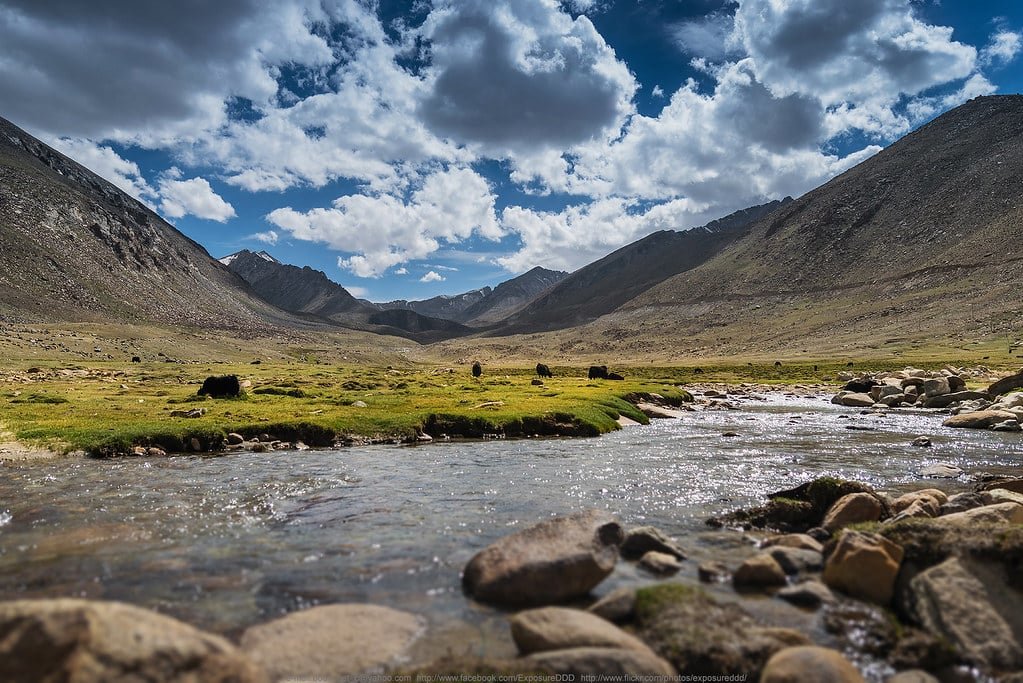
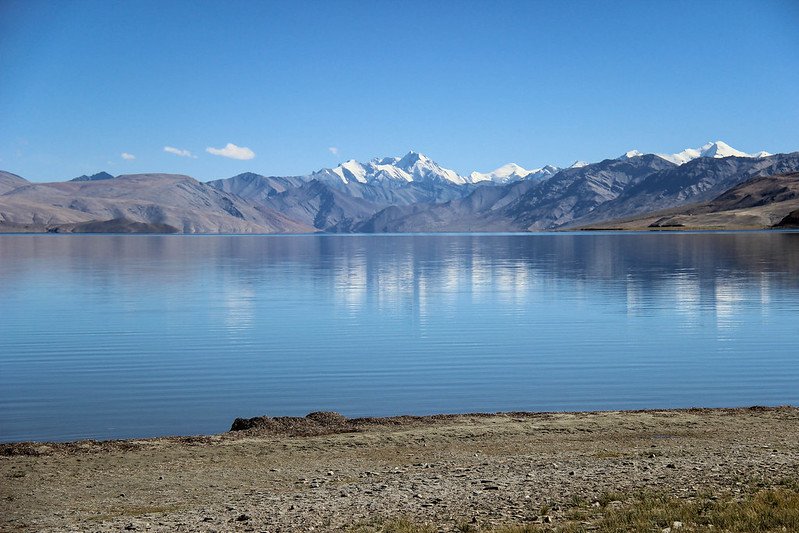



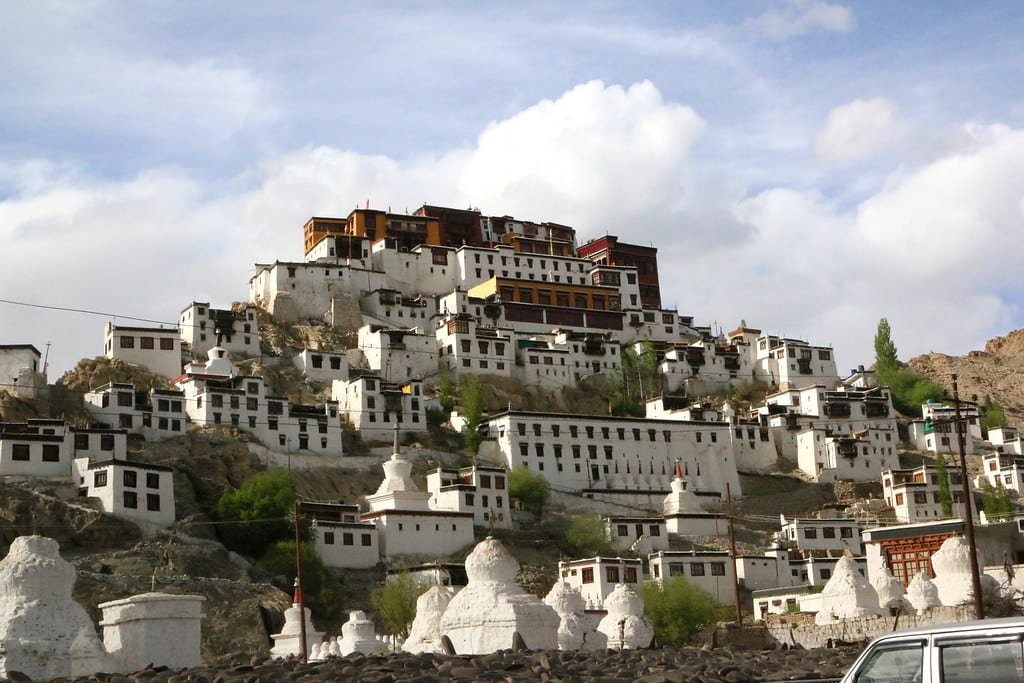
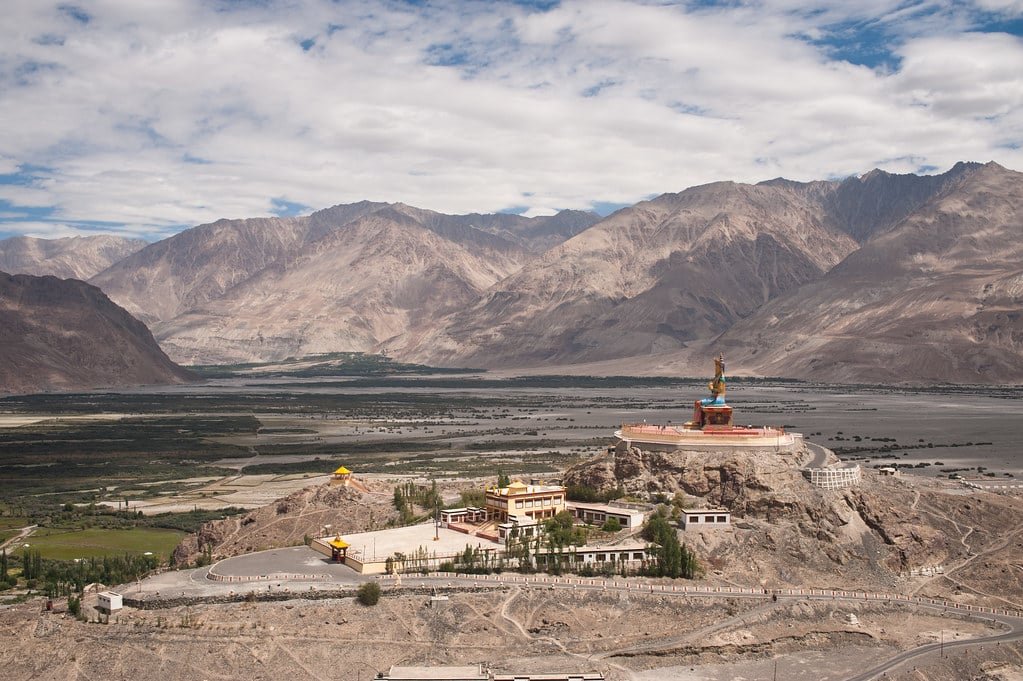



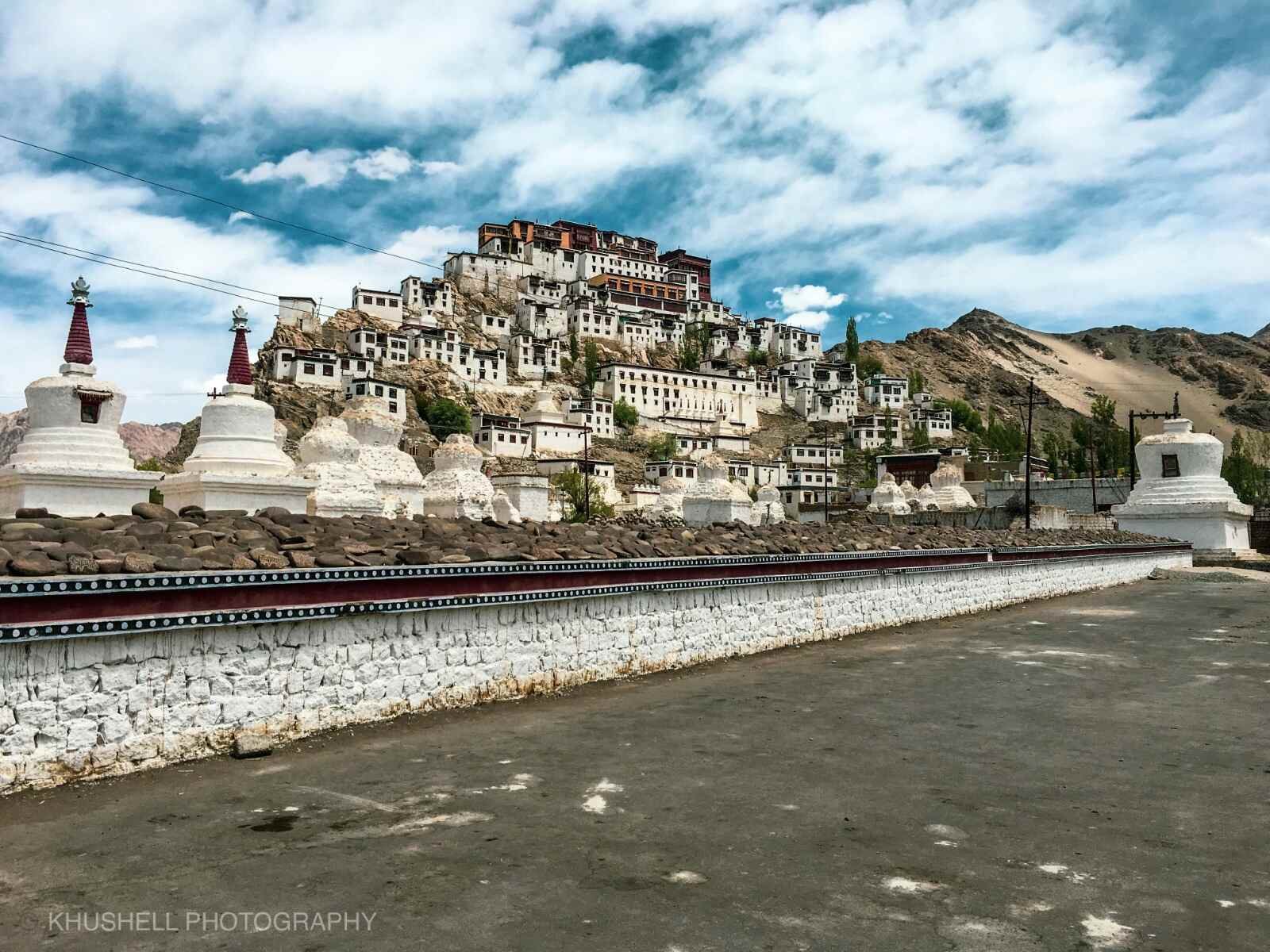
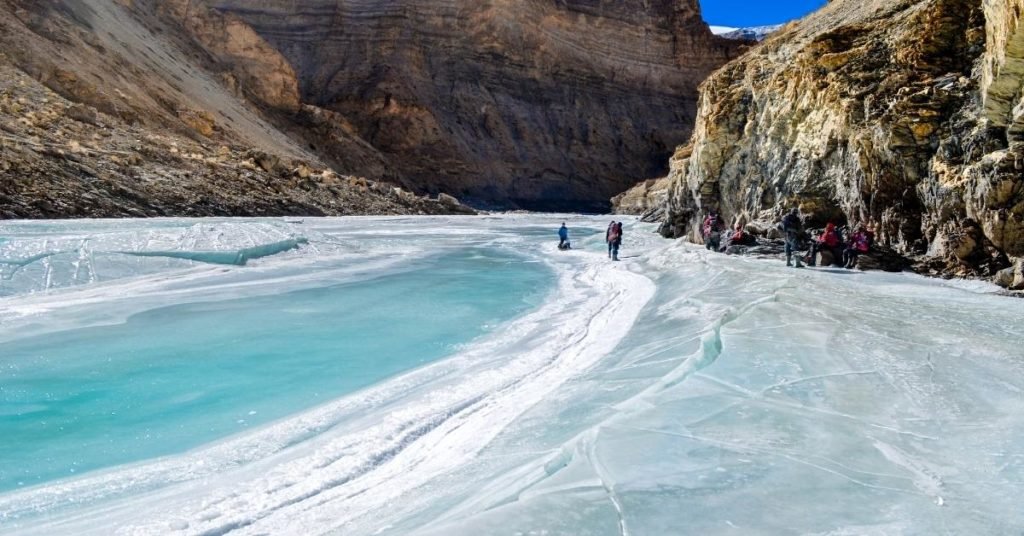

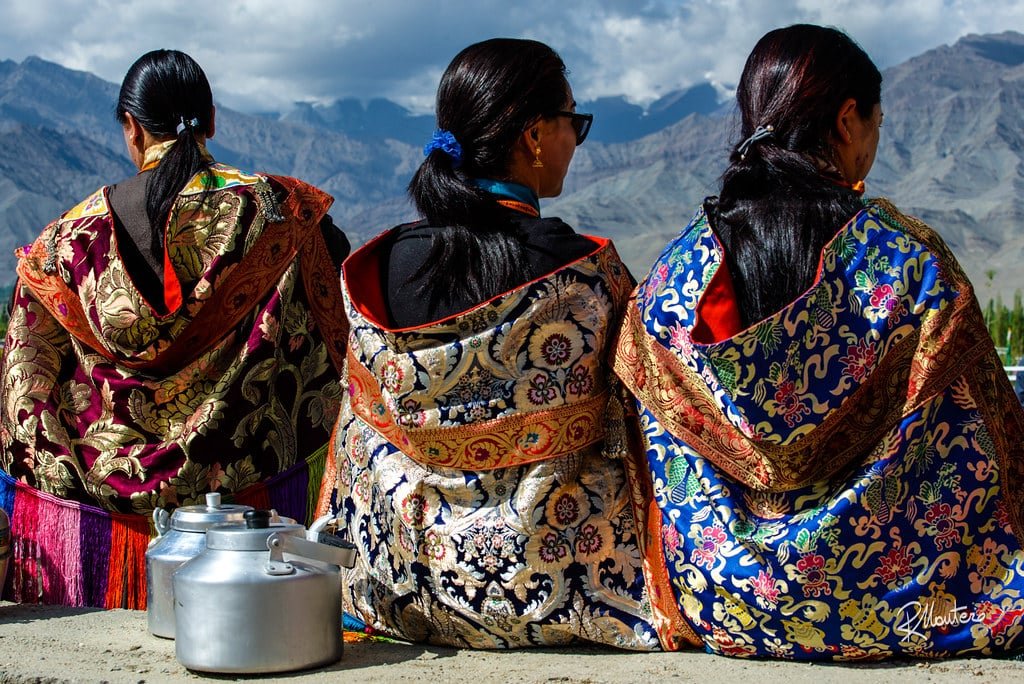
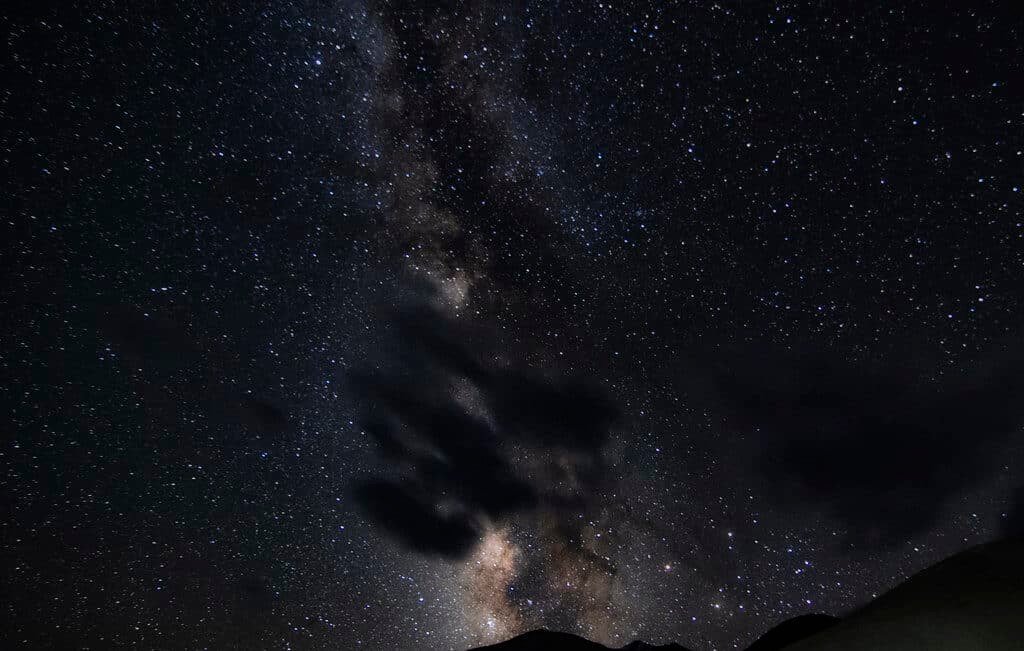

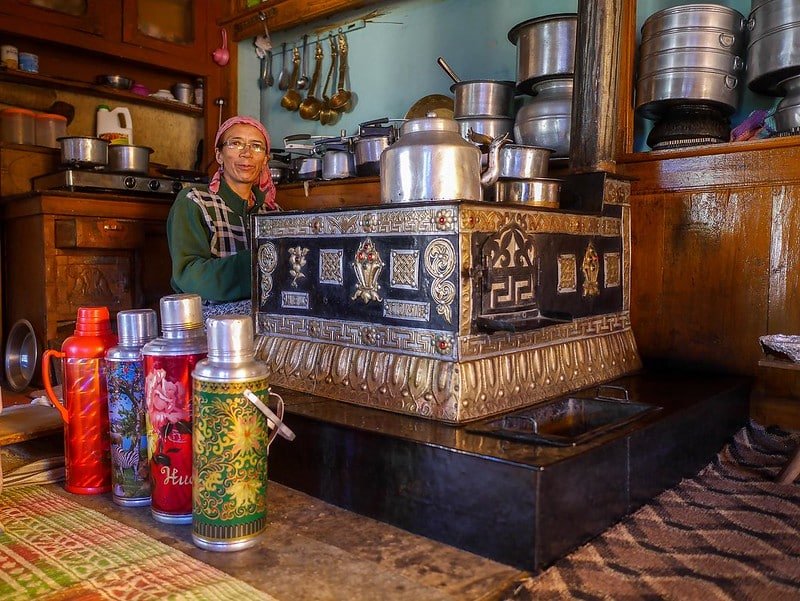
 Call Now
Call Now Chat With Us
Chat With Us